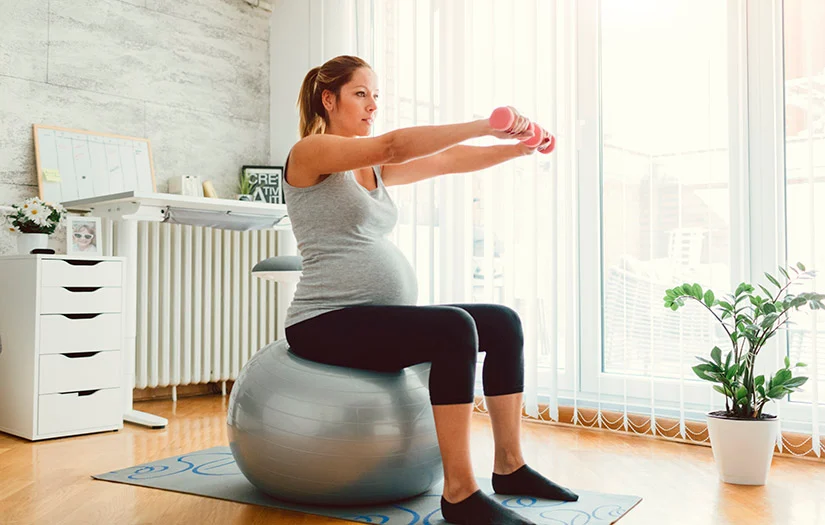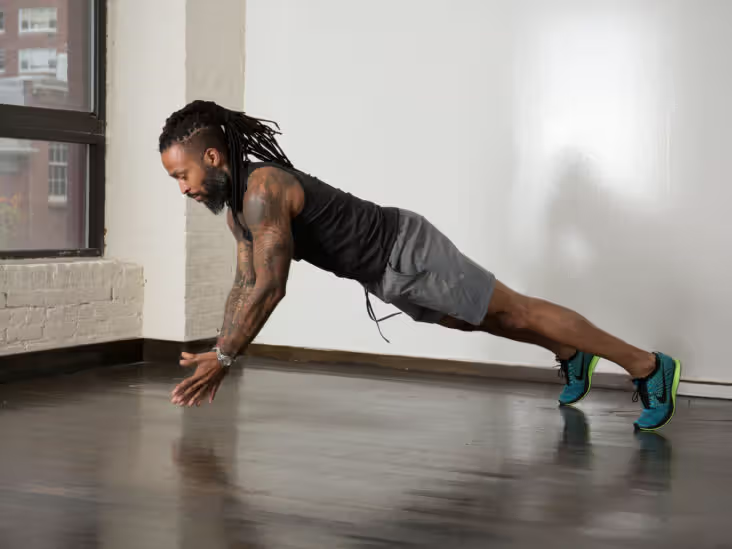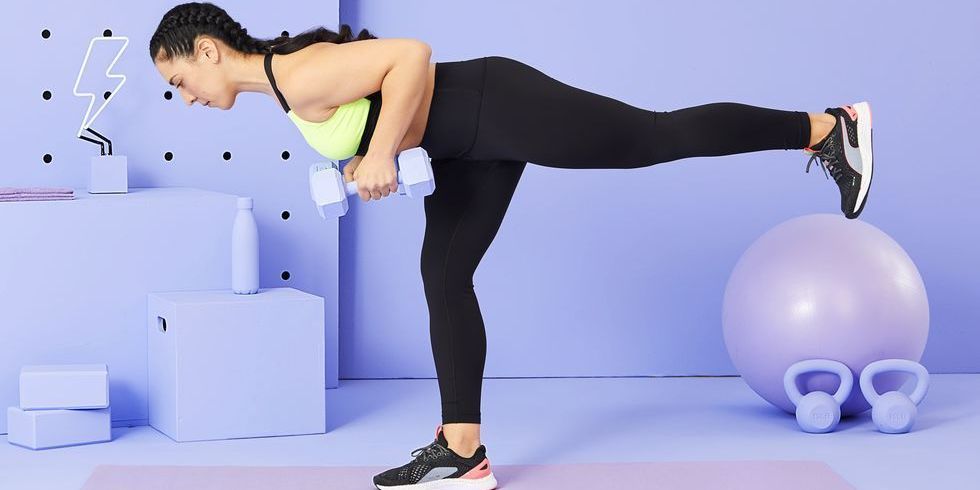The good news? Staying active tops the list of things to keep for the next 9 months. And whether you’re looking to continue your current workout routine or start a new one, we’ve got you covered. From cardio and strength training to stretching and core exercises, here’s everything you need to know about staying fit during your pregnancy.
Benefits of exercising while pregnant still
If you think of exercise solely as a way to fit into a smaller pair of pants, you may need to shift your perspective (and priorities) now that you’re pregnant.
Brooke Cates, prenatal and postpartum fitness expert and owner of Studio Bloom, says some exercises can be implemented in each trimester to support the body through its physical changes while preparing for an easier return to exercise postpartum.
She emphasizes a shift of focus on core and pelvic floor awareness, which can help you build a deeper core-based connection before the real changes begin to take place.
Safety tips for the exercises while pregnant 's
When considering exercises for pregnancy, Cates says there aren’t a lot of activities that need to be removed from your current regimen.
“While the majority of exercises can be continued throughout each trimester, modifying and scaling back where needed can help increase the strength, stability, and physical adaptability as your body changes,” she says.
With that in mind, here are some general safety tips to consider when exercising during pregnancy, according to the ACOG.
- Get clearance from your doctor if you’re new to exercise or you have any health conditions that may contraindicate exercise.
- Drink plenty of water before, during, and after exercise.
- Don’t become overheated, especially during the first trimester.
- Avoid lying flat on your back for too long, especially during the third trimester.
Cardio for all three trimesters
Cardiovascular exercises such as walking, swimming, jogging, and stationary cycling are top picks during all three trimesters.
Unless your doctor has told you to modify physical activity, follow the U.S. Department of Health and Human Services Physical Activity Guidelines for Americans, which recommends getting at least 150 minutes of moderate-intensity aerobic activity each week.
Exercises to do in the first trimester of pregnancy
The first three months of pregnancy can be a wild ride of emotions. From elation and pure joy to concern, worry, and even fear as you begin to realize that you’re responsible for nourishing, growing, and keeping this tiny soon-to-be human being safe and healthy.
As long as you’re not considered a high-risk pregnancy, physical therapist Heather Jeffcoat, DPT, says you can continue with your regular routine in the first trimester.
It should also focus on specific exercises that help make pregnancy easier and prepare you for labor and childbirth.
One area of importance, says Jeffcoat, is to work on body awareness to prepare for changes in your posture. “Doing an exercise like the pelvic curl is a great way to begin working on spinal mobility and strengthening the abdominal muscles that will support your belly as it grows,” she says.
Pelvic curl
- Lie on your back with your knees bent and feet flat on the ground, about hip-width apart.
- Take a deep breath in to prepare, then exhale as you tuck your pelvis (your “hips”) so that you’re making an impression of .
- Keep that tucked position as you continue the exhale and roll through the movement so that you are lifting your spine out of that impression,
- Stop when you reach your shoulder blades.
- Inhale at the top of the movement, then exhale as you fold your body back down, placing one vertebra at a time back onto the floor until you get to your starting position on the back of your pelvis
Pelvic brace
Do this throughout pregnancy as long as you don’t have pelvic floor symptoms such as painful intercourse or urinary urgency.
- Lie on your back with your knees bent and feet flat on the ground, about hip-width apart.
- Place your pelvis and low back into a “neutral” position. To find this, make sure you’re resting on the back of your pelvis and creating a small space in your lower back (your back should not be pressed into the floor).
- Slightly draw the lower abs in with the Kegel. Inhale, relax the abs and pelvic floor,
- Do 2 sets of 8 to 15 repetitions of 3- to 5-second holds, once or twice a day.
Kneeling pushups
This move targets core and upper body strengthening together.
- Lie flat on your stomach, then push up onto your hands and knees, keeping your knees behind your hips.
- Pull in your abs (the pelvic brace), and then slowly lower your chest toward the floor as you inhale.
- Exhale as you press back up.






.jpg)

